 |
| Peanut Butter Hill |
We met at the back of Kahana Valley 30 minutes later than anticipated due getting stuck behind a bus on Kam Highway and then headed for La'ie leaving my jeep behind. We started up La'ie Trail around 7am or so. Despite being my third time on the La'ie Trail, this was the first time I'd be going up. As we made our way up the dirt road that makes up the first part of the trail we couldn't help but note the clouds hanging along the Ko'olau Summit. Another bad sign was the red dirt was the consistency of peanut butter from the rains overnight. It stuck between the voids of my panama soled boots and collected ironwood needles and adding weight to each step. I stopped periodically to scrape it off on roots, rocks, or whatever else I passed but eventually just gave up and lived with the added weight on my boots.
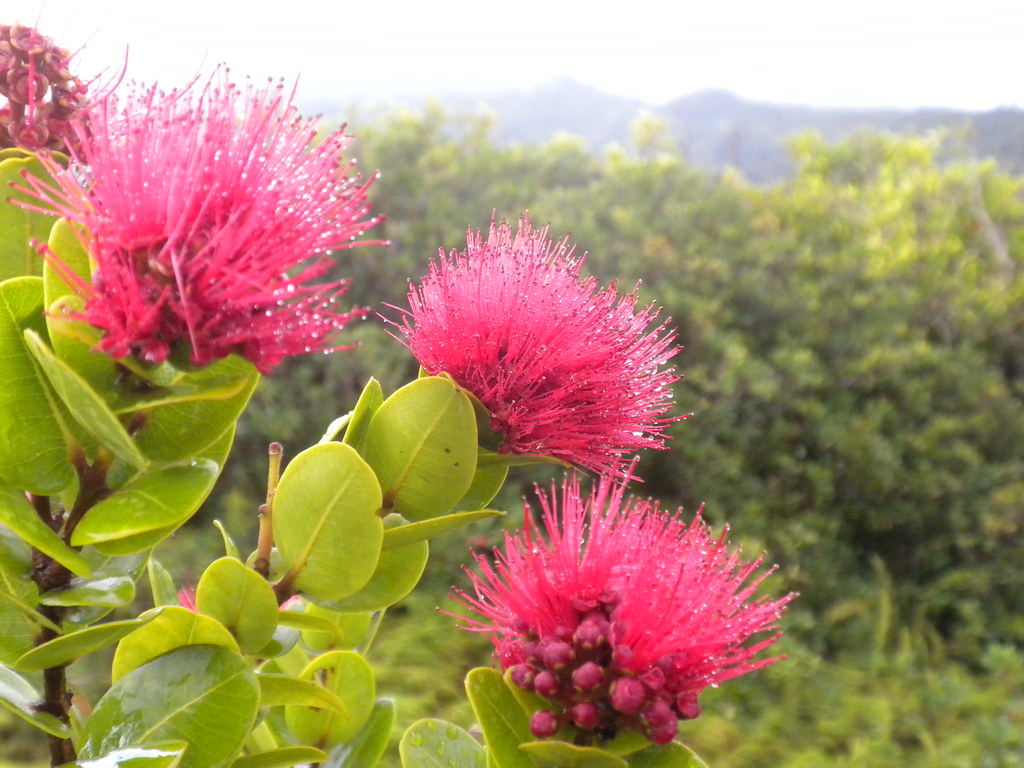 Although the lower sections of the trail are filled with introduced vegetation there are a few endemic plants to be found if you keep your eyes open. We passed by a few ohia and akia trees along the sides of the road. Two ohia in particular were very interesting- one with hot pink colored flowers and the other with a magenta coloration. While there is a lot of variation in color in ohia these were a bit different than the normal range. Their location in this dry lower elevation climate is less common after somewhere around 1000 years or so of human activity too. Most of the dry forest was burned repeatedly to clear the way for polynesian agriculture and what wasn't destroyed by the Hawaiians was later destroyed by the introduction of cattle, the sugar plantations, coffee, and pineapple fields in the 1800's through the end of the last century. Sorry, back to the trail.
Although the lower sections of the trail are filled with introduced vegetation there are a few endemic plants to be found if you keep your eyes open. We passed by a few ohia and akia trees along the sides of the road. Two ohia in particular were very interesting- one with hot pink colored flowers and the other with a magenta coloration. While there is a lot of variation in color in ohia these were a bit different than the normal range. Their location in this dry lower elevation climate is less common after somewhere around 1000 years or so of human activity too. Most of the dry forest was burned repeatedly to clear the way for polynesian agriculture and what wasn't destroyed by the Hawaiians was later destroyed by the introduction of cattle, the sugar plantations, coffee, and pineapple fields in the 1800's through the end of the last century. Sorry, back to the trail.Looking back at the ocean and the approaching rain showers wasn't encouraging. However, after giving up last week we were determined to push as far as possible today anyway.
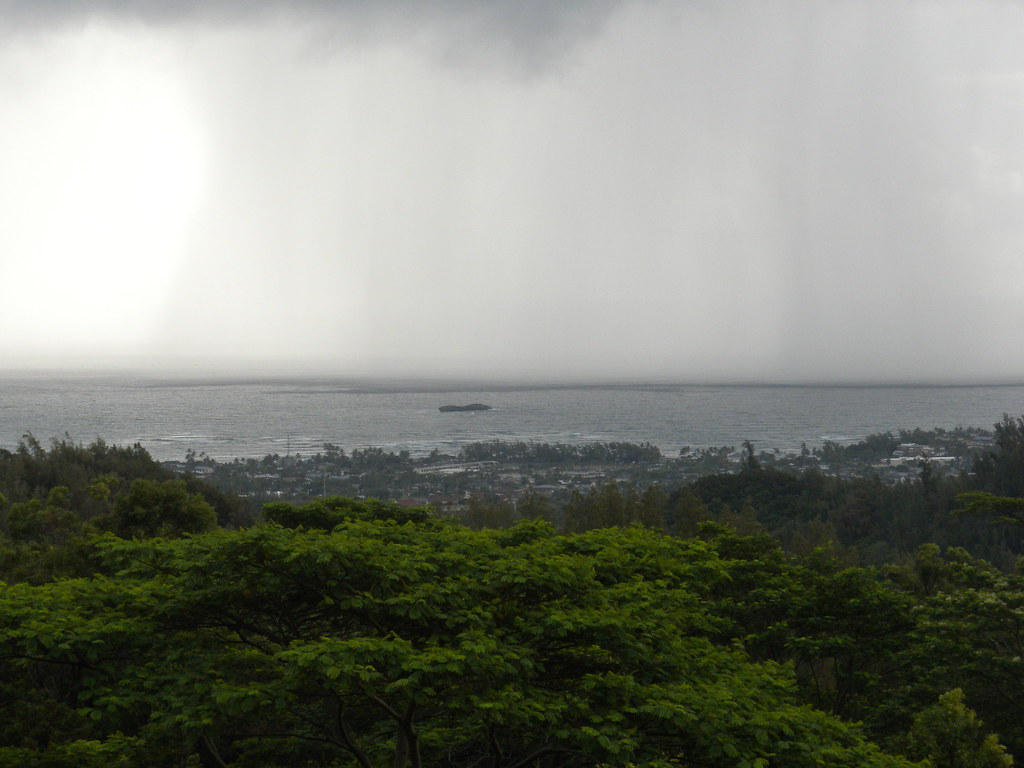 |
| A wall of water headed for us... |
Continuing up the trail past the pines we entered the strawberry guava zone. Other than stopping occasionally at breaks in the dense guava to check out the views or wait out showers this section of the trail is pretty nondescript.
As memory serves me the change to more native forest happens about where the side trail to La'ie Falls is. We passed the falls yet again not wanting to waste any time still hoping to make it to Kahana Valley however the rain showers just kept coming.
After the falls junction we the passed though, in my opinion, the nicest sections of the graded trail. The difference between Malaekahana's ungraded ridge and La'ie's graded trail are something you just have to experience to appreciate. Despite some slippage in a few places the trail is very tame and the gentle climb to the summit is a pleasure not a grueling workout.
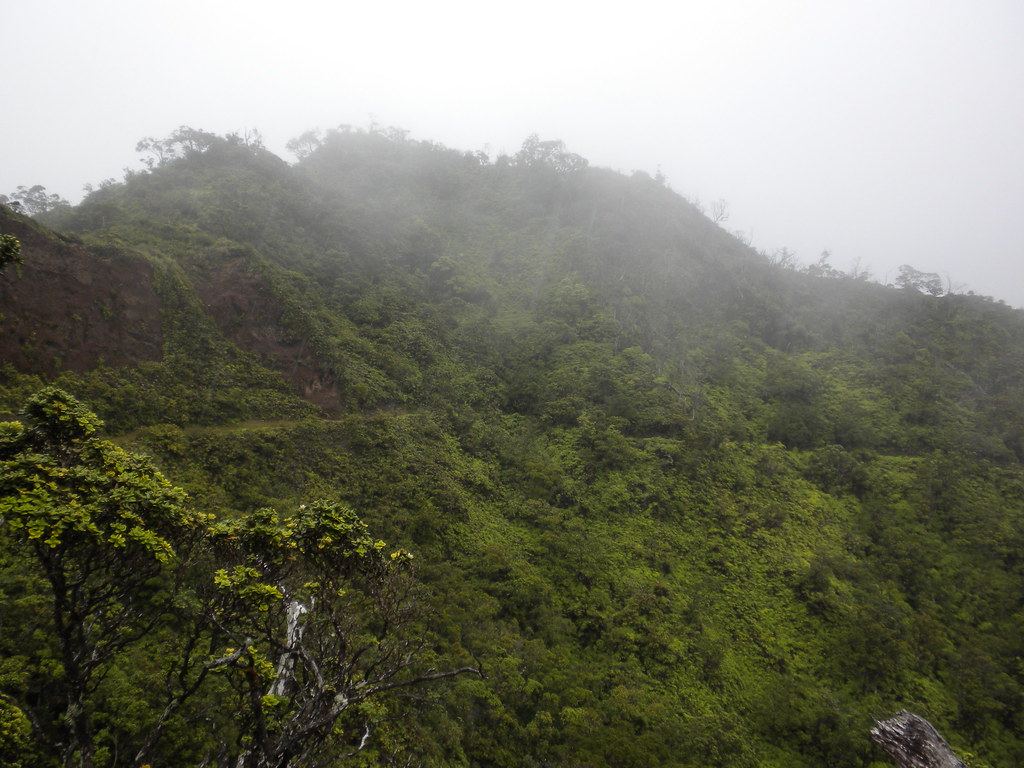 |
| La'ie Trail cutting into the ridge |
 |
| II approaches the crossover |
When we reached the KST Junction we were greeted with more clouds and some passing showers. I'm completely shocked that I took hardly any pictures. I did take some video which I may patch together into another not-so-great video. Here's my ugly mug posing with the KST Junction sign.
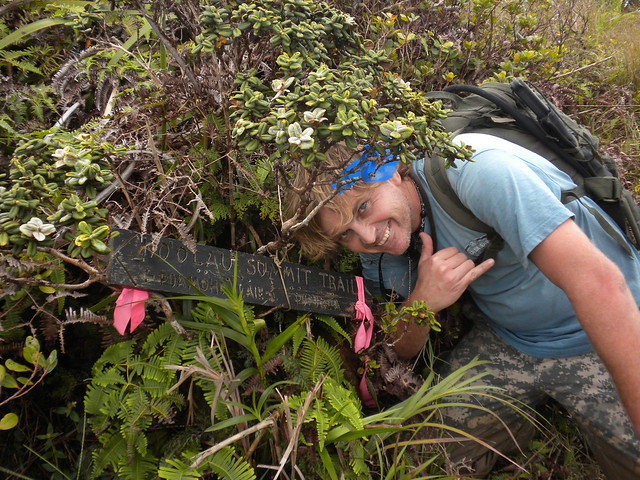 |
| Lai'e Junction |
We did get some really brief but great views of central O'ahu at the junction before the clouds took them away. The western Ko'olaus are as remote as it gets on O'ahu- a very nice change from our busy urban landscape, I don't remember what time it was but we were behind schedule by about an hour when we reached the junction. Despite that, we decided to press on to at least the Kawailoa Junction less than a mile away to check out what the Army had been up to over the last two weeks.
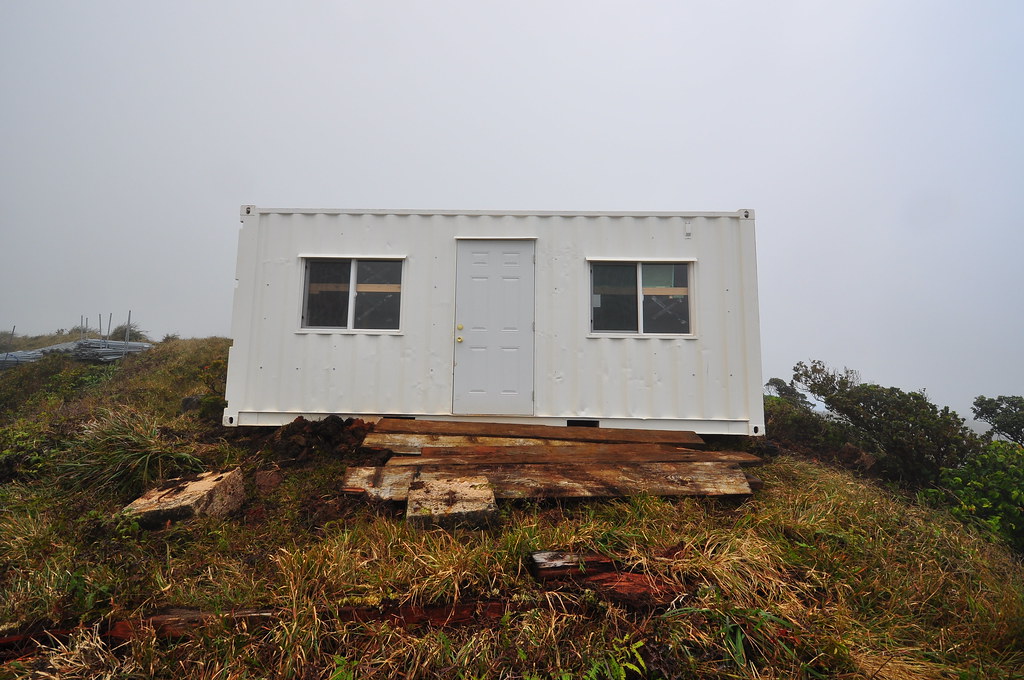 |
| The Army's brand new "Cabin" |
After seeing all the activity here two weeks earlier I'd contacted the Army to inquire as to what they were up to.
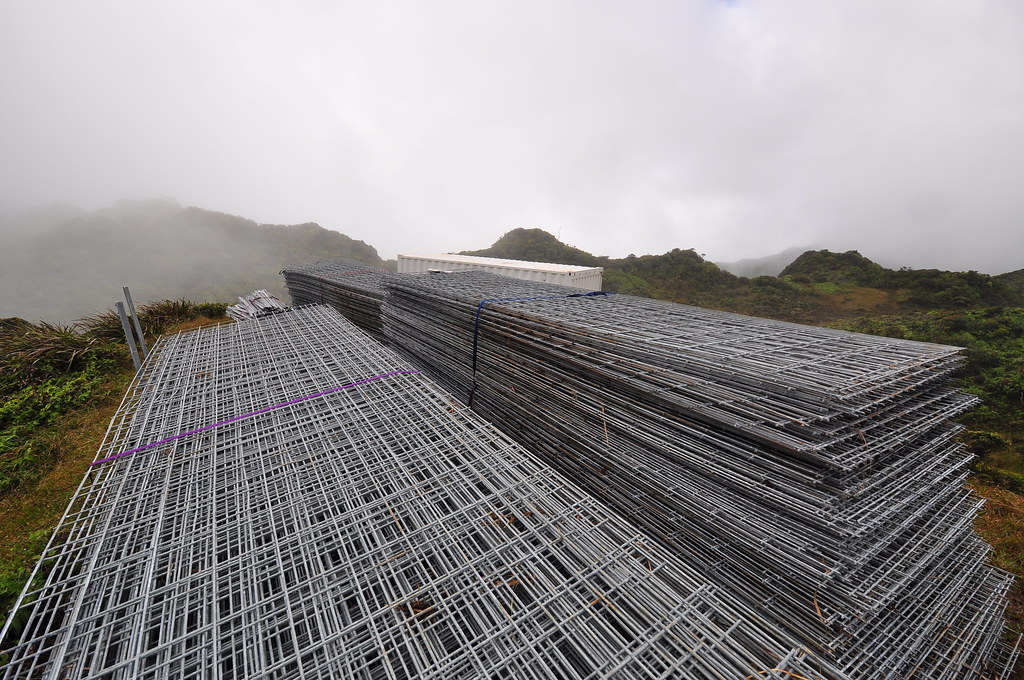 |
| Fencing materials stacked and ready to keep the pua'a out |
My questions:
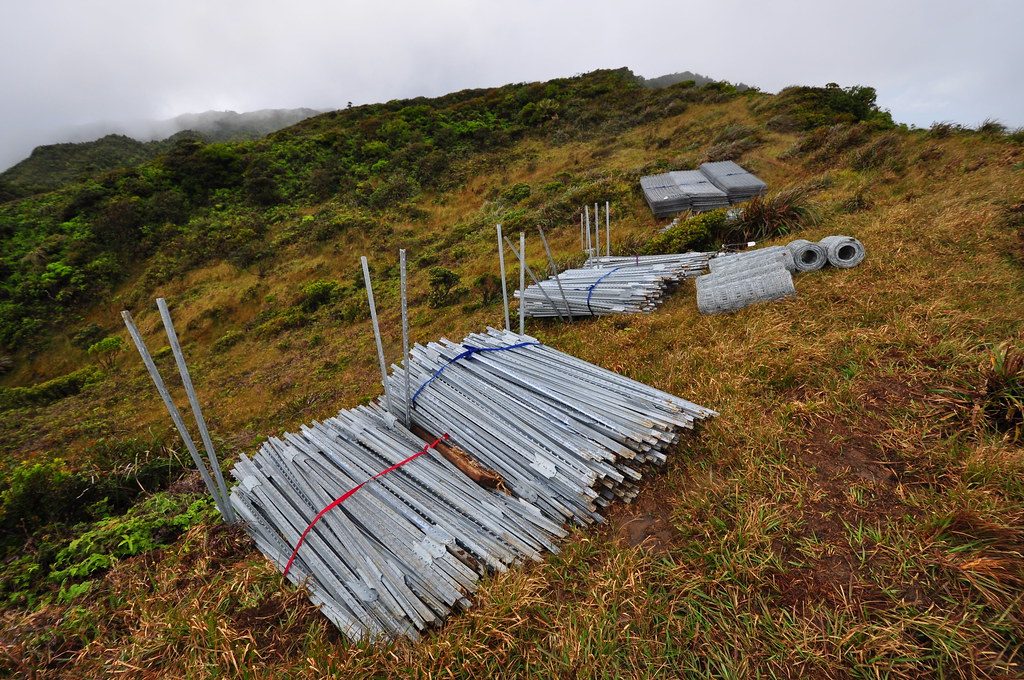 1. How much area is being fenced, for what purpose, by which agencies, and on who's property.
1. How much area is being fenced, for what purpose, by which agencies, and on who's property.2. Previous fence projects have taken into account the historic Ko'olau Summit Trail that runs the ridge from Pupukea to Kipapa. Will this fence impact the Ko'olau Summit Trail or the nearby Kawailoa Trail, or any of the historic trails in the area? If so, will access to these trails be impacted?
3. Is the purpose of the fence to protect one particular species of plant, a pig exclusion fence to protect native forest, or for some other purpose.
4. Is there anything that the Army would like to say or have included in the very short narrative I'll be writing?
Here is the entire official response I received. They also included a really great shot of the CH-47 dropping a shipping container off. I'm going to take that inclusion to mean I have permission to post that here as well.
 |
| How cool a shot is this! (US Army Photo) |
The Oahu Army Natural Resource Program (OANRP), in partnership with Hawaii Reserves Inc. and the Koolau Mountains Watershed Partnership are staging fencing materials for a fence to protect the upper reaches of Koloa Gulch, Ko'olau Mountains. The fence will be constructed on land owned by Hawaii Reserves Inc. The fence, intended to keep out feral pigs and their damaging effects on native resources, will protect over 8 endangered plant species, 2 plant species proposed for endangered species listing and one species of endangered Oahu tree snail. In addition 164 acres of wet forest habitat and watershed.
The Oahu Army Natural Resource program is contracting a fencing company to clear the fenceline and erect the fence. All proper permitting has been acquired including a Finding of No significant impact under NEPA, a conservation district use permit from DLNR and an license agreement with the landowner allowing OANRP to conduct natural resource protection on this parcel. Exact placement of the fenceline along the Koolau summit trail will be determined in consultation with the Hawaii Trail and Mountain Club and crossover stiles will be installed where needed to preserve the use and integrity of the trail.
Last Tuesday's operation involved flying bulk loads of fence materials to a relatively flat "staging area" using a (large capacity) Chinook helicopter. Once all the fencing is at that staging area, it will be distributed along the fencline using a small hughes 500 helicopter. The next possible date for flying the remaining fence materials to the site using Chinook helicopter is Tuesday, Sept 6th."
It certainly looks like this is a great project that will help protect more native forest from the feral pigs that inhabit the area. Judging by the large areas of damage we saw on the Pupukea to La'ie sections and that on the Malaekahana trail the area is in need of protection. It's also a very positive sign that the trails in the area will have access preserved and that the HTMC will at least be consulted prior to installation of the fence. All that said, I'm fully aware that metal fences can spoil the mood and the views but there is no other way to preserve what's left of the endemic forests here. I know I'd rather see a fence than a strawberry guava / clidemia summit scared with pig wallows.
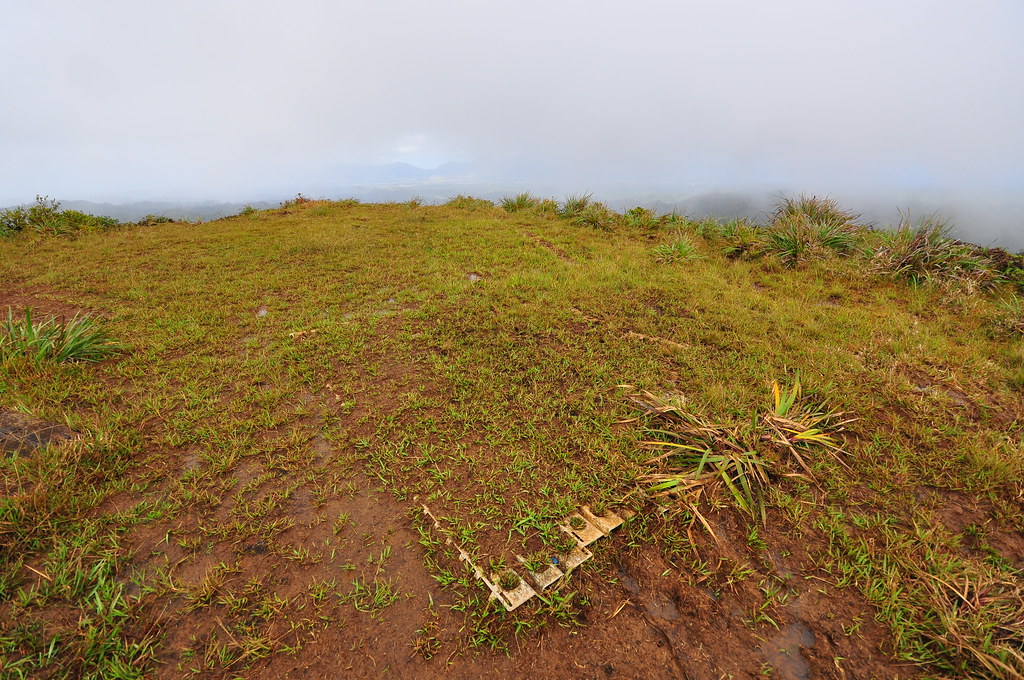 |
| The steel matted LZ |
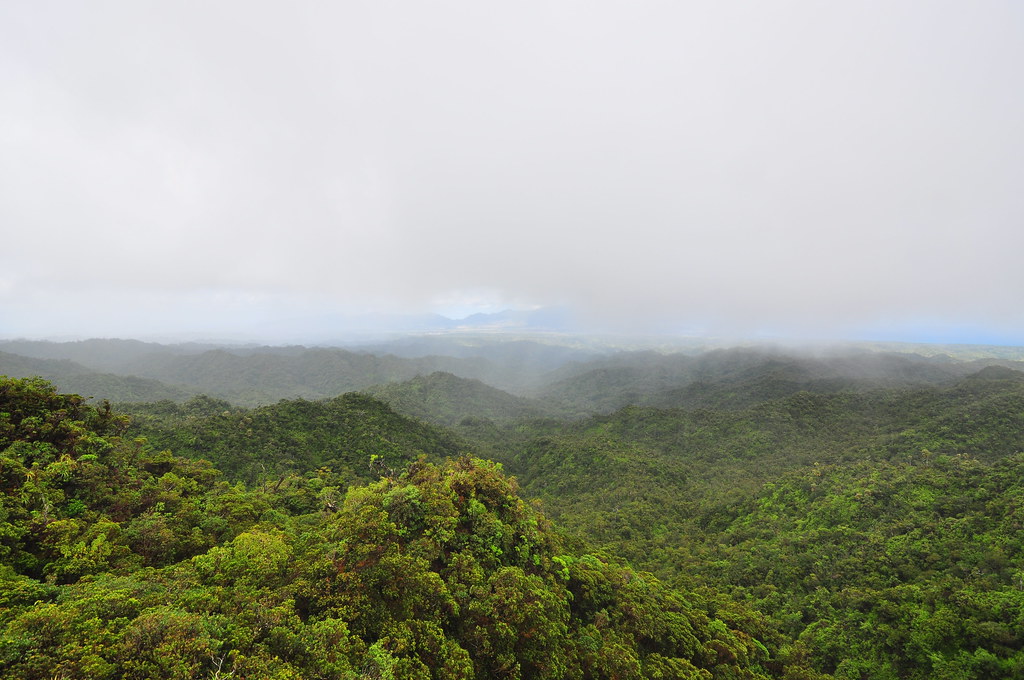 |
| View from the LZ |
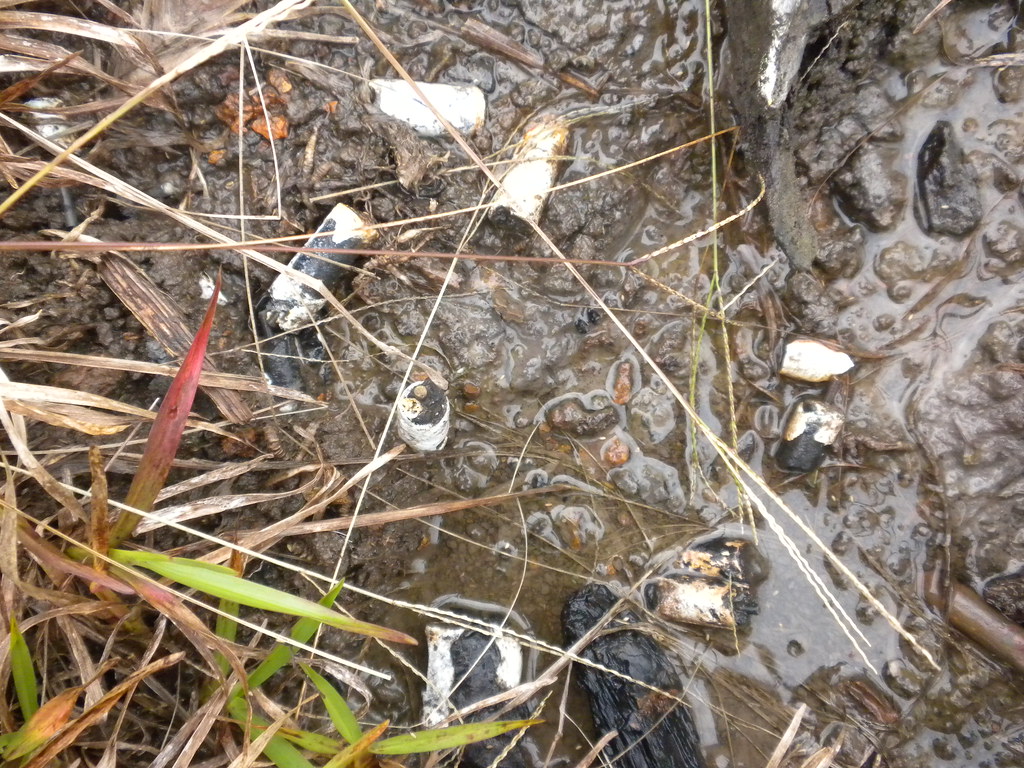 |
| Lot's of decaying batteries... |
On the way back we passed a flat area where at one time the Kawailoa Cabin stood. It's now strewn about the area with some old liter that probably dates from that era.
After reaching the La'ie Trail and starting down I started feeling this really odd poke every time my right heel hit the ground like I had a rock in my boot. Considering they'd been tied up the entire time we were on the trail it seemed really strange. My partner suggested we stop and I check it out but I figured I could do that at the waterfall instead.
By the time we arrived at the falls junction that irritating poke in my heel was really bothering me. I hoped the trail down would be really short and as it turned out it was ridiculously short. It took about less than five minutes to make my way down to the muddy pool and falls. There were a few erosion control measures and a few old looking ropes for assistance but I didn't bother with them.
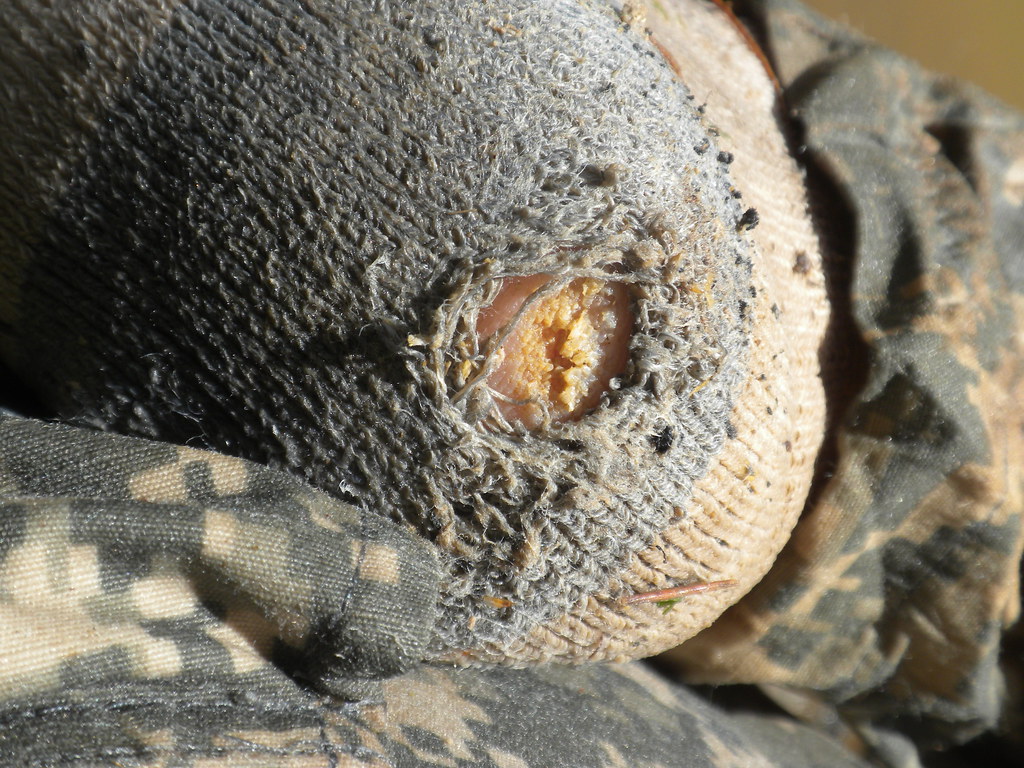 Happy to stop and not be jabbed in the foot by the rock in my boot I was shocked to see a hole in the double layer of brand new socks I'd put on that morning. What the? Wait, there's a hole in my foot too... I ran my finger inside my boot and found a spike that is used in their construction to hold the soles on. The bottom of the boots had melted away with their repeated exposure to water and the little spike had worked its way through the foam insole, both my socks and into my flesh.
Happy to stop and not be jabbed in the foot by the rock in my boot I was shocked to see a hole in the double layer of brand new socks I'd put on that morning. What the? Wait, there's a hole in my foot too... I ran my finger inside my boot and found a spike that is used in their construction to hold the soles on. The bottom of the boots had melted away with their repeated exposure to water and the little spike had worked its way through the foam insole, both my socks and into my flesh.We watched the water flow of the waterfall increase as yet another massive rain shower passed further up the mountain while I cut up a plastic bottle to try and provide my heel with a little protection. We had hoped to wash some of the mud off of us but the water in the pool looked just as dirty as we were. After enjoying the beauty we made our way back up to the La'ie Trail and back down the ridge.
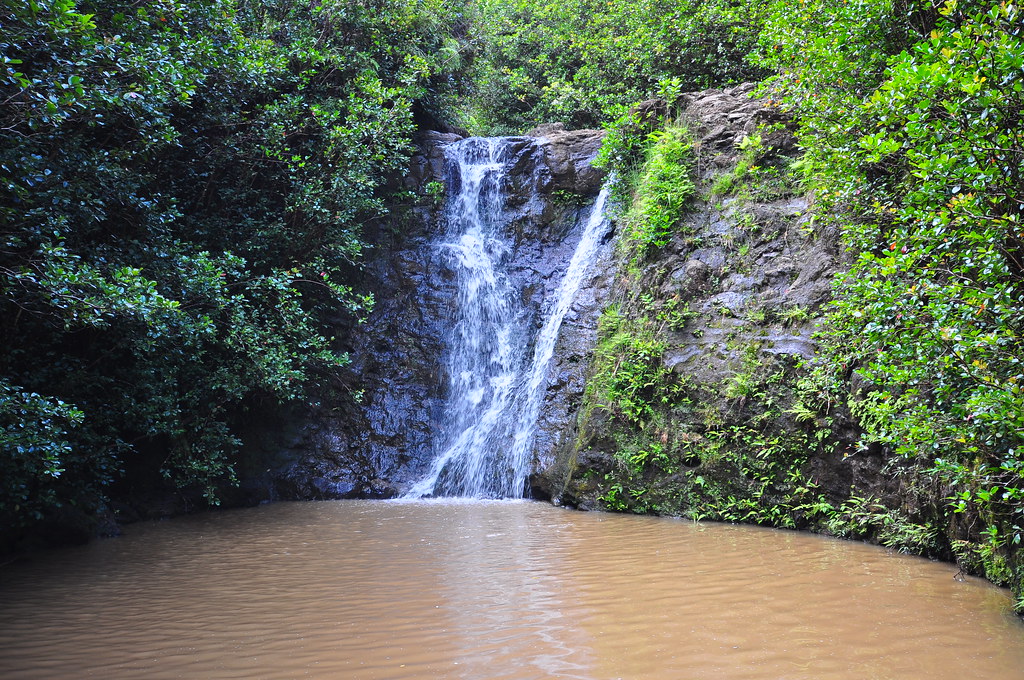 |
| La'ie Falls |
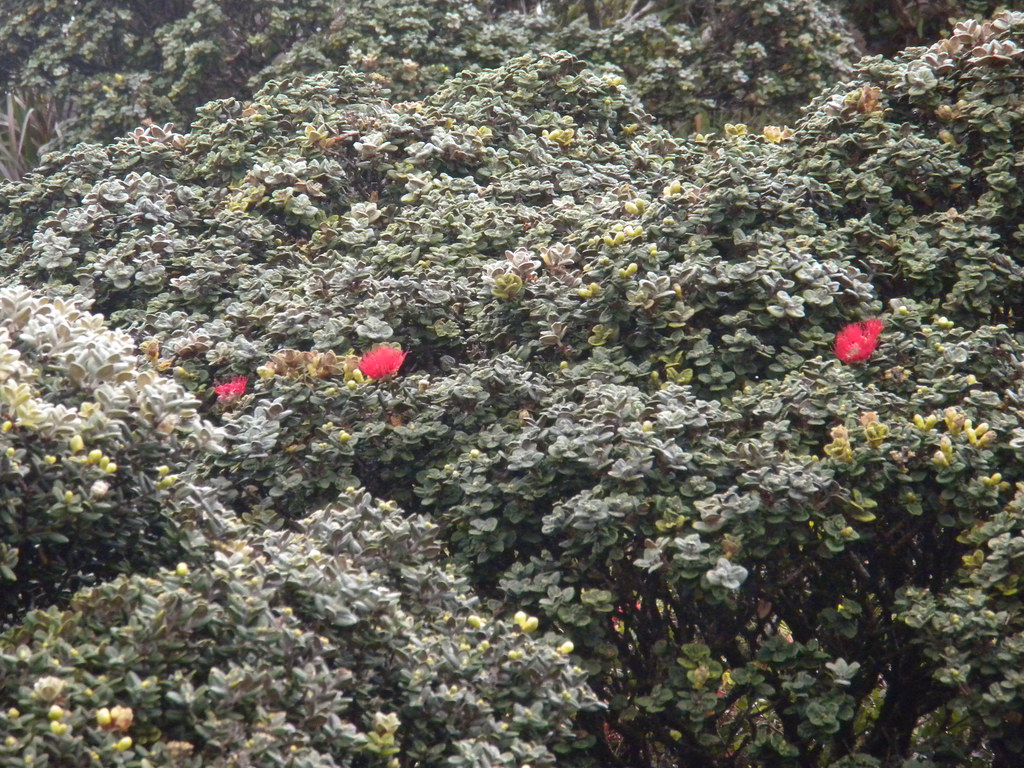
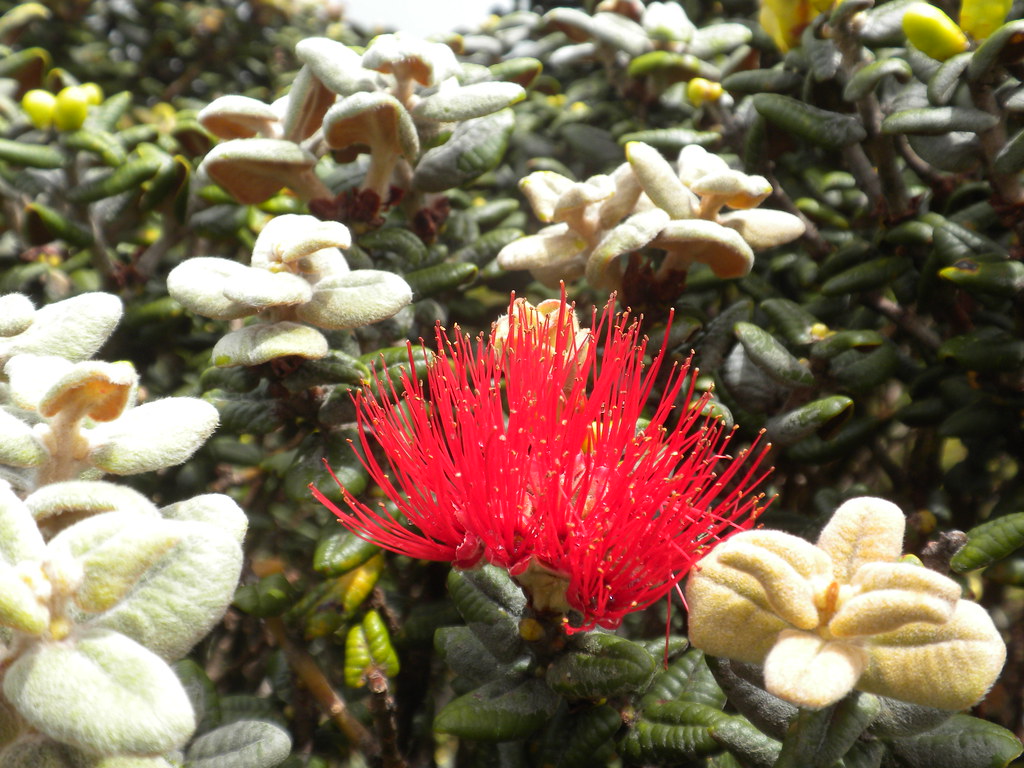 I won't bother with the details considering I've done this one three times in a month now.
I won't bother with the details considering I've done this one three times in a month now.More pictures from this trail and others I've done are can be viewed at Flickr. Aloha and thanks for reading!
 |
| La'ie Falls and pool |
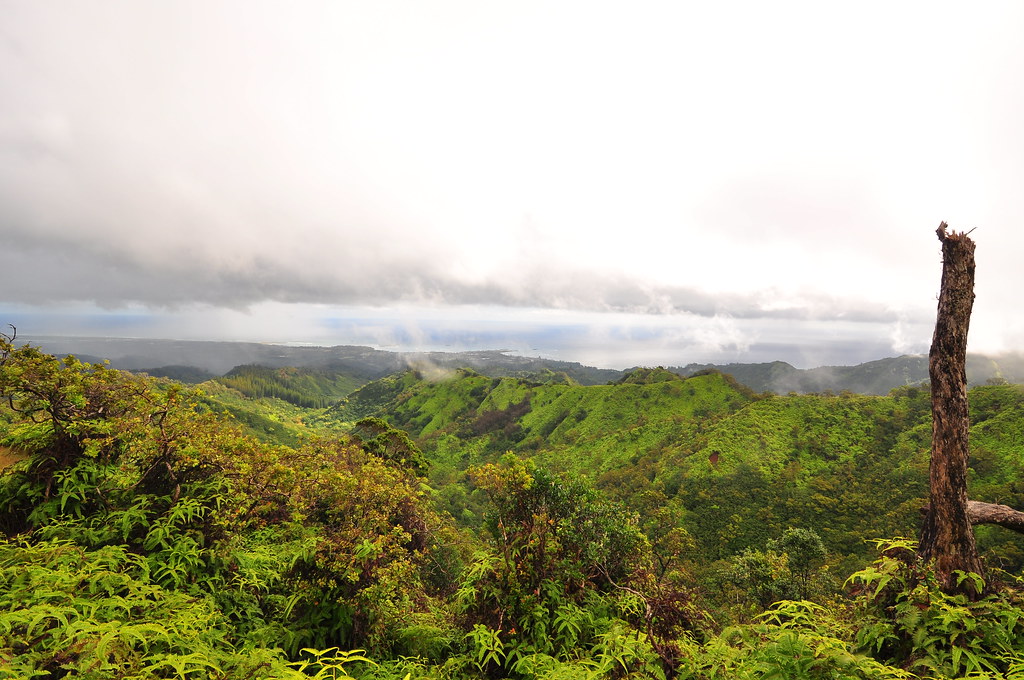
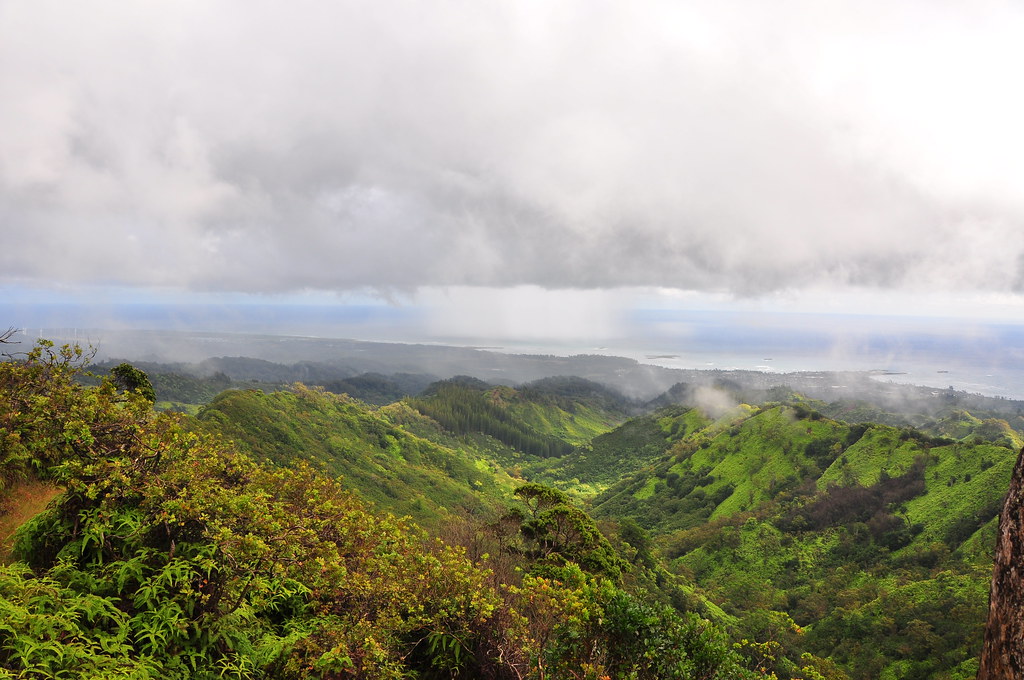


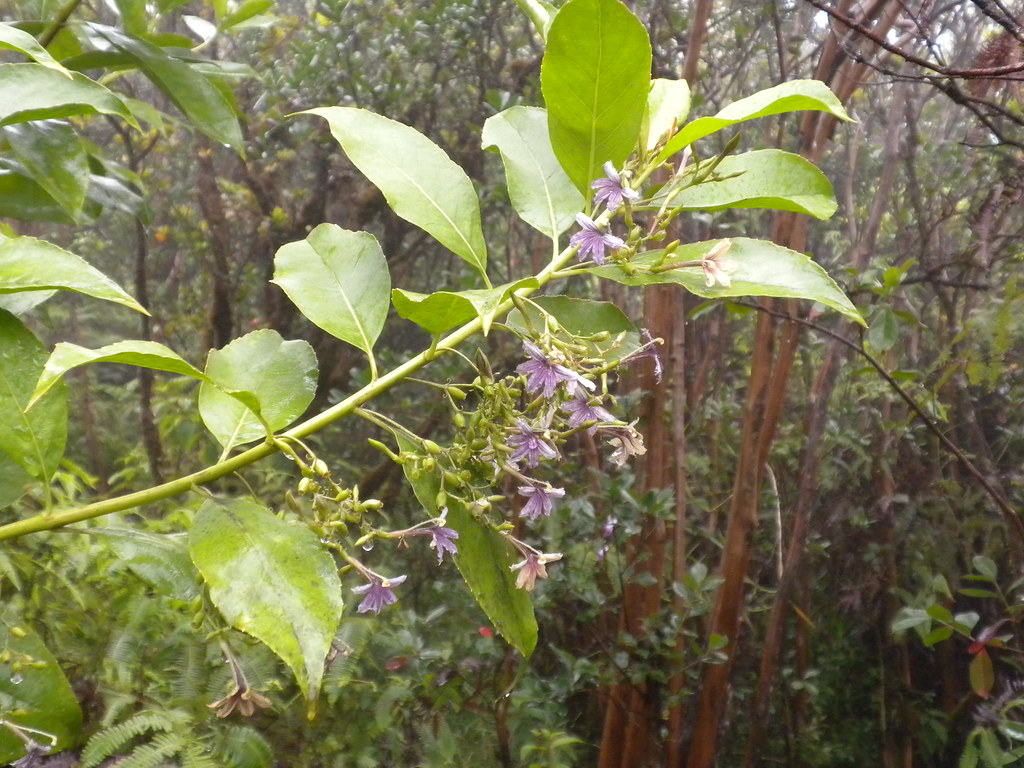
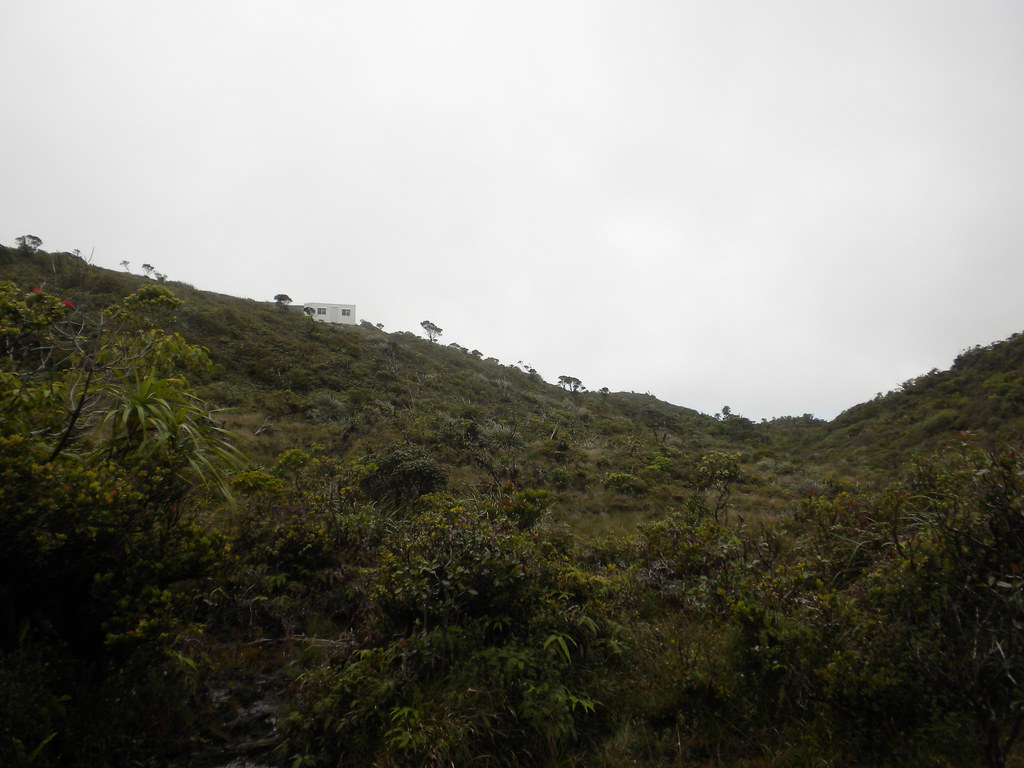


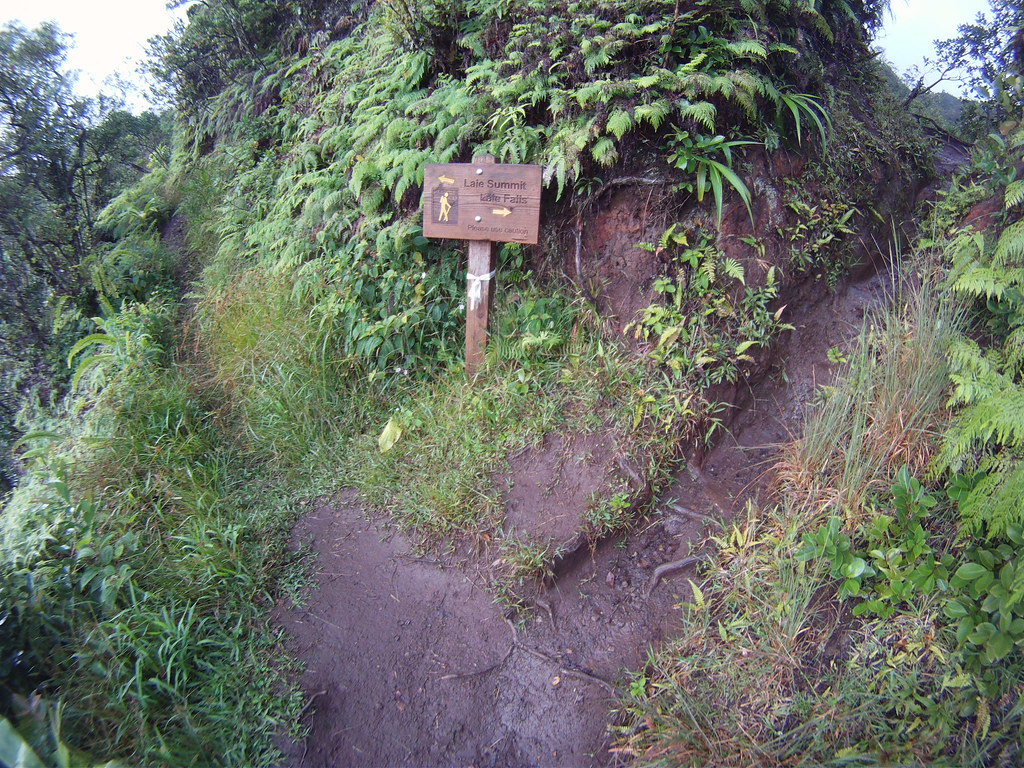
Sparks flew, the gate was closed, all the angles were examined together with an inside job. We saw the wood for the trees, we will now have to tread carefully with our lamp posts neatly in a row!chain link fence installation
ReplyDelete